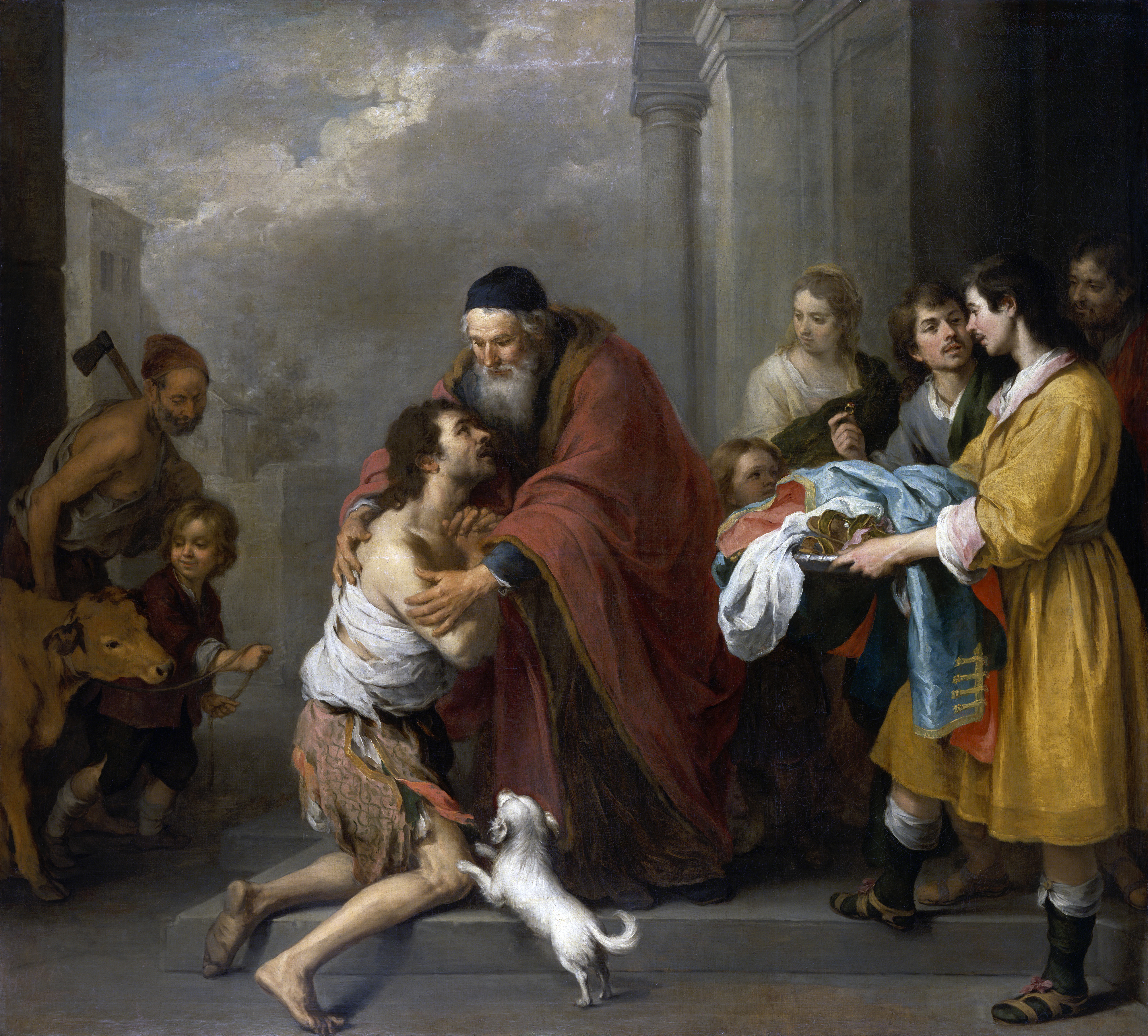The Return of the Prodigal Son by Bartolome Esteban Murillo, Luke 15:11-32, Bible.Gallery
Artwork Description

In Murillo's remarkable artistic rendition, his profound aptitude for dramatic storytelling comes to the fore. He skillfully captures the timeless parable of the prodigal son, a profound allegory of remorse and divine pardon. The composition is so meticulously orchestrated that it evokes the ambiance of a meticulously staged theatrical production.
Murillo's discerning eye zeroes in on the pivotal moments of the narrative: the penitent son's poignant homecoming, his father's compassionate welcome, the opulent attire and symbolic ring reinstating the prodigal child within the family's embrace, and the fatted calf being led to its destiny, destined for the joyous feast. The focal point of this colossal painting is the larger-than-life, central pyramidal arrangement that portrays the father and son, bestowing dominance upon this pivotal scene. Within this visual symphony, the servant carrying the newly acquired garments takes center stage with a palette of the most opulent hues. Murillo's deliberate choice to emphasize this facet of the parable, laden with symbolic charity, possibly aligns with the painting's original purpose.
This exceptional work, "The Return of the Prodigal Son," was one of the eight grand canvases crafted for the Church of the Hospital of Saint George in Seville. This sanctuary served as a refuge for the destitute and starving, underscoring the poignant theme of charity and salvation.
Murillo's artistic inspiration was drawn from the life unfolding around him, manifesting itself in numerous poignant details within the canvas. These human touches are the essence of its appeal, from the raw realism captured in the prodigal son's soiled feet to the puppy's exuberant welcome of its master. However, the most heartwarming detail is the sincere and innocent smile gracing the countenance of the young urchin guiding the calf. Murillo's masterpiece transcends its mere physical presence, seamlessly weaving a narrative of redemption, compassion, and humanity, all within the confines of a single canvas.